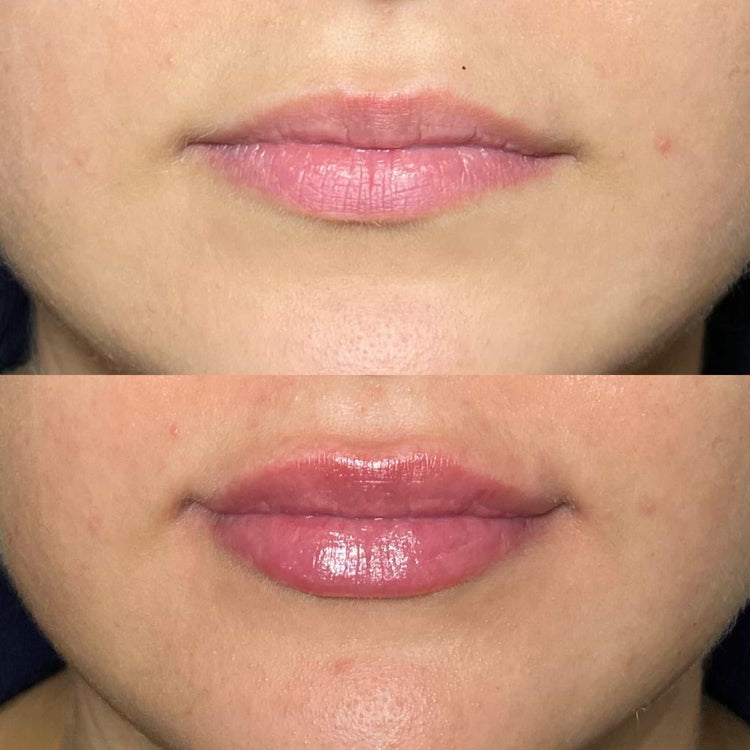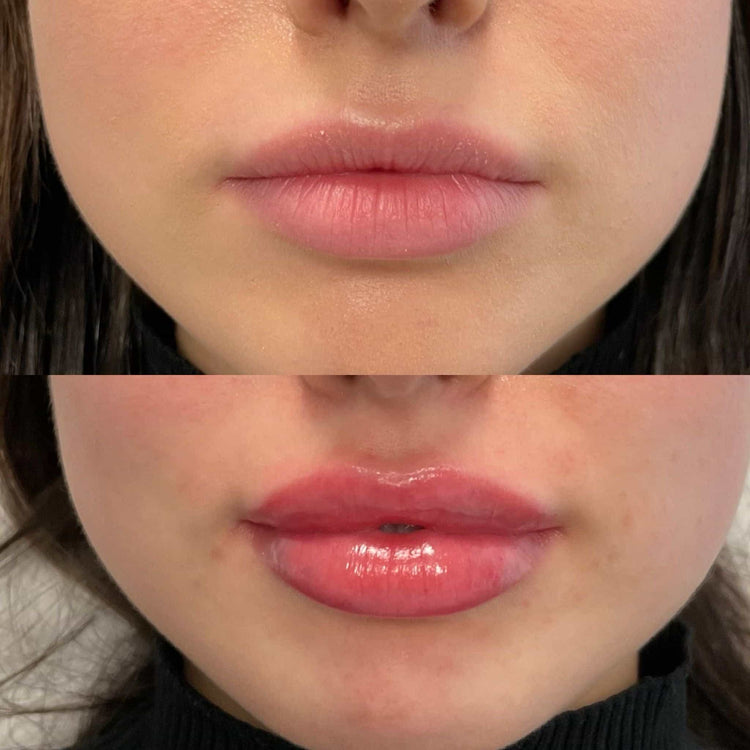Types of Natural-Looking Lip Fillers
Achieving fuller, more defined lips without looking overdone is a desire shared by many in the UK. Luckily, advancements in dermal filler technology have provided a range of natural-looking options. From subtle enhancements to dramatic transformations, understanding the different types of fillers available is crucial for achieving the desired results.
Hyaluronic Acid Based Fillers
When it comes to lip fillers, hyaluronic acid based fillers are the most popular choice for achieving natural-looking results. These fillers work by attracting and retaining moisture, plumping up the lips and smoothing out any wrinkles or lines.
- Hyaluronic acid is a naturally occurring substance in the body, so it’s biocompatible and less likely to cause allergic reactions.
- There are various hyaluronic acid filler types available, each with different consistencies and levels of volumizing power. This allows for precise customization based on individual needs and desired outcomes.
- Hyaluronic acid fillers are typically temporary, lasting anywhere from 6 to 18 months, depending on the product used and individual factors.
Collagen Fillers
Collagen fillers offer another option for achieving fuller lips. Collagen is a protein naturally found in the body that provides structure and support to tissues, including skin.

These fillers work by injecting collagen directly into the lips, adding volume and enhancing their shape.
Plant-Derived Fillers

While hyaluronic acid is a popular choice for lip augmentation, plant-derived fillers are gaining traction as a natural alternative. These fillers are made from biocompatible substances extracted from plants, such as algae or soy.
One example is a filler derived from the red algae Chondrus crispus. This type of filler attracts and retains moisture like hyaluronic acid, providing a plumping effect. Plant-derived fillers are often touted for their biodegradability and potential to minimize allergic reactions compared to synthetic options.
Choosing the Right Filler for Your Needs
Selecting the appropriate lip filler is crucial for achieving the desired aesthetic outcome. Each type of filler offers unique characteristics, affecting both appearance and longevity. Understanding these distinctions empowers individuals to make informed decisions aligned with their beauty goals.
Assessing Your Desired Outcome
Assessing your desired outcome is paramount when choosing a lip filler. Consider the level of enhancement you seek—subtle plumping or a more dramatic transformation. Think about the shape of your lips and any specific areas you want to address, such as fullness, symmetry, or definition.
Think about longevity as well. Temporary fillers offer subtle results that gradually fade over time, while permanent options provide long-lasting enhancement.
Consultation with a Qualified Practitioner
Choosing the right filler depends heavily on individual needs and desired outcomes. A consultation with a qualified practitioner is essential to determine the most suitable option.
During this consultation, discuss your aesthetic goals, medical history, and any concerns you may have. The practitioner will assess your facial structure, lip shape, and skin type to recommend the best filler type and treatment plan.
They can guide you through the different options available, explain the expected results, potential risks and benefits, and answer any questions you have.
Preparing for Treatment
Preparing for lip filler treatment involves careful consideration of your desired outcome, skin type, and medical history. Understanding the various types of fillers available—including hyaluronic acid, collagen, and plant-derived options—is essential to making an informed decision.
Pre-Treatment Skincare Routine
Before undergoing lip filler treatment, it’s crucial to establish a proper skincare routine. This helps ensure optimal results and minimizes potential complications.
- Exfoliate regularly: Gently exfoliating your lips 1-2 times a week removes dead skin cells, allowing for smoother filler application and better absorption.
- Hydrate consistently: Keep your lips moisturized with a hydrating lip balm containing hyaluronic acid or other humectants. This helps plump the lips naturally and prepares them for treatment.
- Avoid sun exposure: UV rays can damage the skin, making it more prone to sensitivity and irritation. Protect your lips with sunscreen daily, especially in the days leading up to your appointment.
Avoiding Certain Medications and Supplements
In addition to a good skincare routine, certain medications and supplements should be avoided before lip filler treatment as they can interfere with the healing process or increase the risk of complications.
These include:
- Aspirin and other blood thinners: These can increase bleeding during and after the procedure.
- Nonsteroidal anti-inflammatory drugs (NSAIDs): Like ibuprofen or naproxen, NSAIDs can also increase bleeding and may interfere with the filler’s effectiveness.
- Vitamin E supplements: High doses of vitamin E can thin the blood and increase bruising.
- Fish oil supplements: Similar to vitamin E, fish oil can also affect blood clotting.
It is important to inform your practitioner about all medications and supplements you are taking, including over-the-counter drugs and herbal remedies.
Treatment Process
Navigating the world of lip fillers can seem daunting. Understanding the different types available and their characteristics is essential for achieving natural-looking results.
Injection Technique
The injection technique for lip fillers involves precise placement to achieve the desired aesthetic outcome. A qualified practitioner will use a very fine needle to inject the filler strategically into various layers of the lips. The injection sites are tailored based on individual needs, considering factors like desired fullness, shape, and symmetry.
During the procedure, the practitioner will communicate with you throughout, ensuring your comfort and addressing any concerns you may have. The treatment itself is generally quick and minimally invasive.
After the injection, it’s important to follow post-treatment care instructions provided by your practitioner to minimize bruising, swelling, and ensure optimal healing.
Numbness and Discomfort
The treatment process for lip fillers typically involves a few simple steps. Following a consultation where you discuss your desired outcome with the practitioner, they will cleanse the area and apply a topical anesthetic to numb the lips.
Numbness is achieved through this anesthetic application, reducing any discomfort during the procedure. The practitioner will then inject the filler using a very fine needle, strategically targeting specific areas of the lips to achieve the desired shape and fullness.
Discomfort during the treatment can vary from person to person, but many patients describe it as a mild pinching or stinging sensation.
After the procedure, some temporary swelling and redness are common, but these usually subside within a few days.
Recovery and Aftercare
Understanding the recovery process after lip filler treatment is crucial for achieving optimal results and minimizing potential complications.
Swelling and Bruising Management
Recovery from lip fillers is generally quick and straightforward. Swelling and bruising are common side effects and typically subside within 7-10 days.
- Apply cold compresses: To minimize swelling, apply ice packs wrapped in a towel to the treated area for 15-20 minutes at a time, several times a day.
- Avoid touching or rubbing your lips: This can irritate the area and worsen swelling.
- Use over-the-counter pain relievers: If needed, ibuprofen or acetaminophen can help manage any discomfort.
- Stay hydrated: Drinking plenty of water helps flush out toxins and promote healing.
- Avoid strenuous activity: Allow your lips time to recover by avoiding excessive exercise or activities that may cause friction or trauma to the area.
It’s essential to avoid any products that irritate the skin, such as alcohol-based toners or scrubs, for at least a week after treatment.
Stick to gentle cleansers and moisturizers specifically formulated for sensitive skin.
Follow-Up Appointments
Recovery from lip fillers is generally quick and straightforward. Swelling and bruising are common side effects and typically subside within 7-10 days.
- Apply cold compresses: To minimize swelling, apply ice packs wrapped in a towel to the treated area for 15-20 minutes at a time, several times a day.
- Avoid touching or rubbing your lips: This can irritate the area and worsen swelling.
- Use over-the-counter pain relievers: If needed, ibuprofen or acetaminophen can help manage any discomfort.
- Stay hydrated: Drinking plenty of water helps flush out toxins and promote healing.
- Avoid strenuous activity: Allow your lips time to recover by avoiding excessive exercise or activities that may cause friction or trauma to the area.

It’s essential to avoid any products that irritate the skin, such as alcohol-based toners or scrubs, for at least a week after treatment.
Stick to gentle cleansers and moisturizers specifically formulated for sensitive skin.
Follow-up appointments are important to monitor your results and address any concerns you may have. Your practitioner will assess the placement of the filler and ensure that it is providing the desired aesthetic outcome.
During follow-up appointments, you can also discuss any side effects you may be experiencing.
- Initial Follow-Up: This typically occurs a few days to a week after the initial treatment to monitor for any immediate complications or concerns like excessive swelling or bruising.
- Follow-Ups at 2 Weeks and 1 Month: These appointments help evaluate the filler’s integration into your lips and ensure it is providing the desired results.
- Longer-Term Follow-Ups: As fillers are temporary, you will need periodic follow-up appointments to maintain your desired aesthetic outcome. The frequency of these visits depends on the type of filler used and your individual needs.
Maintaining Results
Maintaining natural-looking lip filler results involves several key steps taken both before and after the procedure. Proper preparation, post-treatment care, and regular follow-up appointments with a qualified practitioner are essential for achieving optimal outcomes and ensuring long-lasting satisfaction.
Touch-Up Treatments
Maintaining the beautiful results of your lip fillers depends on a few key things.
First, protect your investment by avoiding habits that can break down collagen and elastin in your lips, such as smoking and excessive sun exposure. These factors contribute to premature aging and can lead to less defined filler results over time.
Second, regular touch-up treatments are crucial for maintaining fullness and volume. The longevity of lip fillers varies depending on the type used, but generally, they last between 6 and 18 months.
Schedule a consultation with your practitioner to discuss when you’ll need a top-up appointment to maintain your desired look. They can assess the remaining filler and advise on the best course of action.
Lip Care Routine**
Maintaining natural-looking lip filler results involves several key steps taken both before and after the procedure. Proper preparation, post-treatment care, and regular follow-up appointments with a qualified practitioner are essential for achieving optimal outcomes and ensuring long-lasting satisfaction.
First, protect your investment by avoiding habits that can break down collagen and elastin in your lips, such as smoking and excessive sun exposure. These factors contribute to premature aging and can lead to less defined filler results over time.
Second, regular touch-up treatments are crucial for maintaining fullness and volume. The longevity of lip fillers varies depending on the type used, but generally, they last between 6 and 18 months.
Schedule a consultation with your practitioner to discuss when you’ll need a top-up appointment to maintain your desired look. They can assess the remaining filler and advise on the best course of action.
Protecting your lips from the sun is crucial for maintaining long-lasting results. Lip fillers are typically made of hyaluronic acid, which is sensitive to UV radiation. Sun exposure can break down hyaluronic acid, leading to faster degradation of the filler and requiring more frequent touch-up appointments. Always wear a broad-spectrum sunscreen with an SPF of 30 or higher on your lips even on cloudy days.
Maintaining natural lip care routines is essential for enhancing and prolonging the effects of lip fillers.
- Regular Hydration: Keep your lips consistently hydrated by using a hydrating lip balm throughout the day, especially after washing your face or eating. Choose a balm with ingredients like hyaluronic acid, glycerin, or ceramides to attract and retain moisture.
- Exfoliation: Gently exfoliate your lips 1-2 times a week to remove dead skin cells, promoting smoother filler application and absorption. Use a gentle lip scrub or a soft toothbrush to gently buff away any dry or flaky skin.
- Avoid Irritants: Avoid using harsh products on your lips, such as alcohol-based toners or scrubs, which can irritate the delicate skin and potentially compromise the filler’s integrity.
Discover the lip filler process with Dr. Laura Geige at It’s Me & You Clinic
- Profhilo Treatment Near Normandy, Surrey - June 3, 2025
- The Emotional Impact Of Cheating: Physical Vs Emotional Infidelity - June 2, 2025
- Natural-Looking Lip Fillers: Tips And Tricks For UK Clients - June 1, 2025
